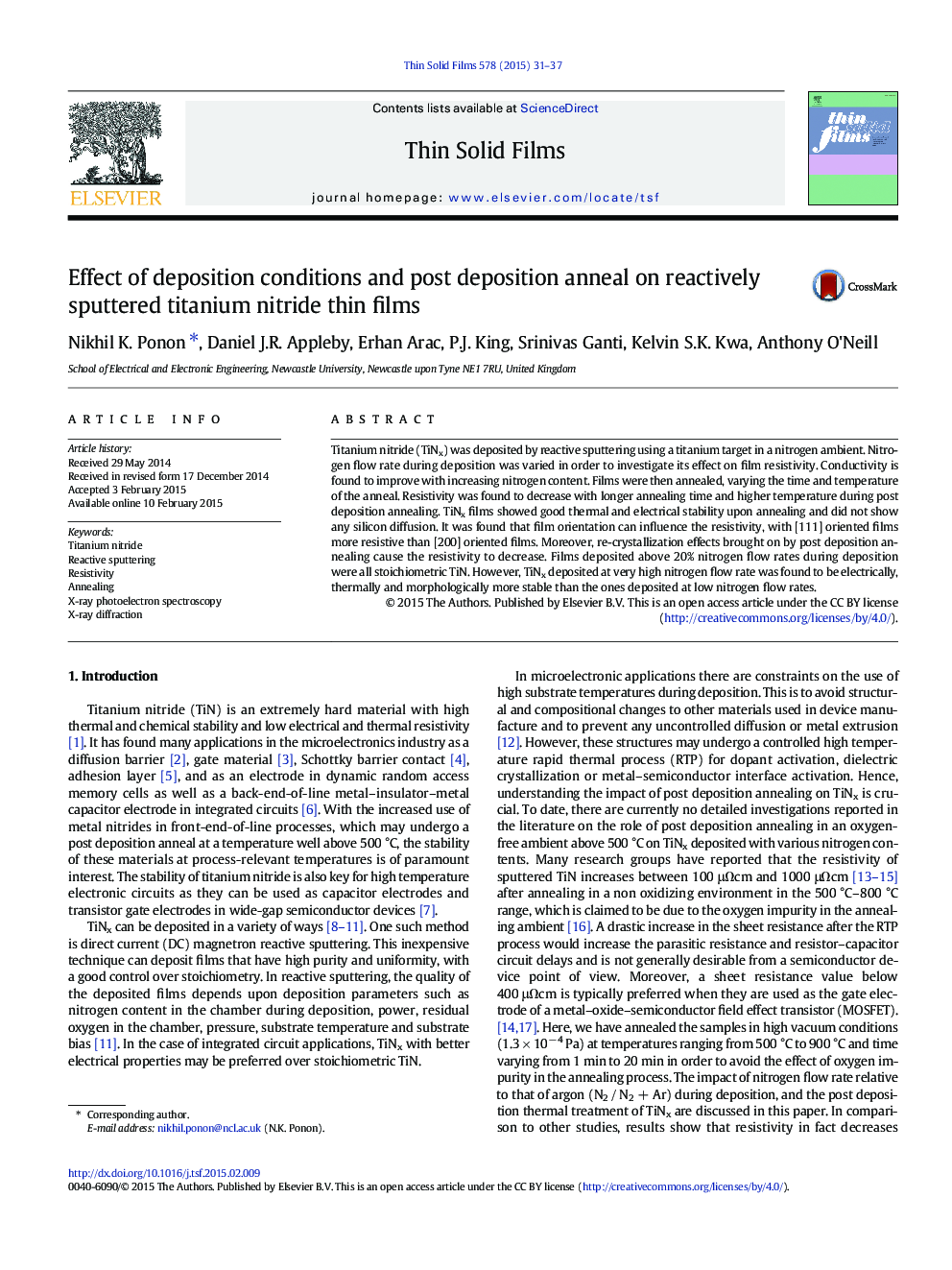| Article ID | Journal | Published Year | Pages | File Type |
|---|---|---|---|---|
| 8034620 | Thin Solid Films | 2015 | 7 Pages |
Abstract
Titanium nitride (TiNx) was deposited by reactive sputtering using a titanium target in a nitrogen ambient. Nitrogen flow rate during deposition was varied in order to investigate its effect on film resistivity. Conductivity is found to improve with increasing nitrogen content. Films were then annealed, varying the time and temperature of the anneal. Resistivity was found to decrease with longer annealing time and higher temperature during post deposition annealing. TiNx films showed good thermal and electrical stability upon annealing and did not show any silicon diffusion. It was found that film orientation can influence the resistivity, with [111] oriented films more resistive than [200] oriented films. Moreover, re-crystallization effects brought on by post deposition annealing cause the resistivity to decrease. Films deposited above 20% nitrogen flow rates during deposition were all stoichiometric TiN. However, TiNx deposited at very high nitrogen flow rate was found to be electrically, thermally and morphologically more stable than the ones deposited at low nitrogen flow rates.
Keywords
Related Topics
Physical Sciences and Engineering
Materials Science
Nanotechnology
Authors
Nikhil K. Ponon, Daniel J.R. Appleby, Erhan Arac, P.J. King, Srinivas Ganti, Kelvin S.K. Kwa, Anthony O'Neill,
